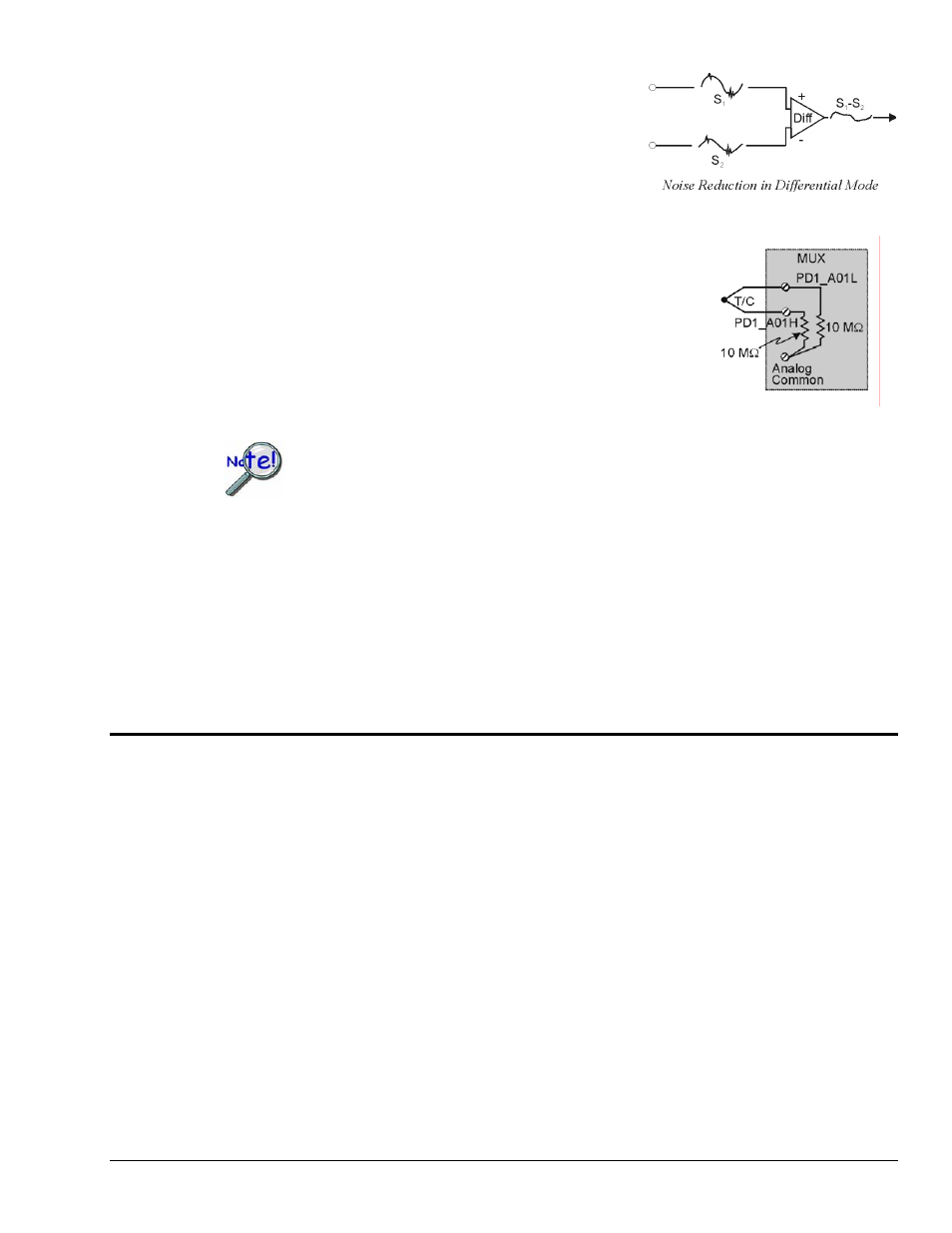System noise, Averaging – Measurement Computing Personal Daq rev.6.0 User Manual
Page 103

In the schematic, voltage signal S
2
is subtracted from signal S
1
,
resulting in the output signal shown. The noise spikes (having
the same polarity, phase, and magnitude in each input signal)
cancel each other out. This results in a clean differential signal
(S
1
- S
2
).
In the schematic, signals S
1
and S
2
are shown in-phase; however,
even if these signals were out of phase, the noise in each
(indicated by jagged lines) would still have the same magnitude, phase, and polarity. For that reason, they
would still cancel out.
Floating-differential measurements are made when low-level signals
must be measured in the presence of high levels of common-mode noise
(e.g., a non-grounded thermocouple). When the signal source has no
direct connection to the system analog common, one must be provided. In
Personal Daq the connection to analog common is provided in the
circuitry with both the channel high and channel low connected to analog
common. Both of these connections to common are made through 10 M
Ω
resistors. No additional connections of channel high and low to common
should be made.
Example of Floating Differential Circuit
Differential signal hookups do not provide isolation or any kind of circuit protection.
Resolution: An analog-to-digital converter (ADC) converts an analog voltage to a digital number. The
digital number represents the input voltage in discrete steps with finite resolution. ADC resolution is
determined by the number of bits that represent the digital number. An n-bit ADC has a resolution of 1
part in 2
n
. Thus, 12 and 16 bit resolutions are as follows:
• 12-bit resolution: 1 part in 4096 (2
12
), corresponding to 2.44 mV in a 10 V range.
• 16-bit resolution: 1 part in 65,536 (2
16
), corresponding to 0.153 mV in a 10 V range.
System Noise
Laboratory and industrial environments often have multiple sources of electrical noise. An AC power line
is a source of 50/60 Hz noise. Heavy equipment (air conditioners, elevators, pumps, etc.) can be a source
of noise, particularly when turned on and off. Local radio stations are a source of high-frequency noise,
and computers and other electronic equipment can create noise in a multitude of frequency ranges. Thus,
an absolute noise-free environment for data acquisition is not realistic. Fortunately, noise-reduction
techniques such as averaging, filtering, differential voltage measurement, and shielding are available to
reduce noise to an acceptable level.
Averaging
Certain acquisition programs apply averaging after several samples have been collected. Depending on the
nature of the noise, averaging can reduce noise by the square root of the number of averaged samples.
Although averaging can be effective, it suffers from several drawbacks. Noise in measurements only
decreases as the square root of the number of measurements—reducing RMS noise significantly may
require many samples. Thus, averaging is suited to low-speed applications that can provide many samples.
Note: Only random noise is reduced or eliminated by averaging. Averaging does not reduce or eliminate
periodic signals.
Personal Daq User’s Manual
878695
Signal Management 5-7
